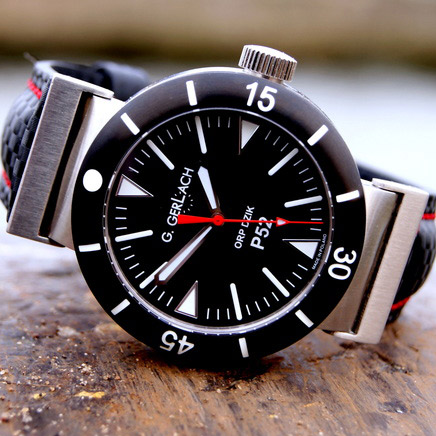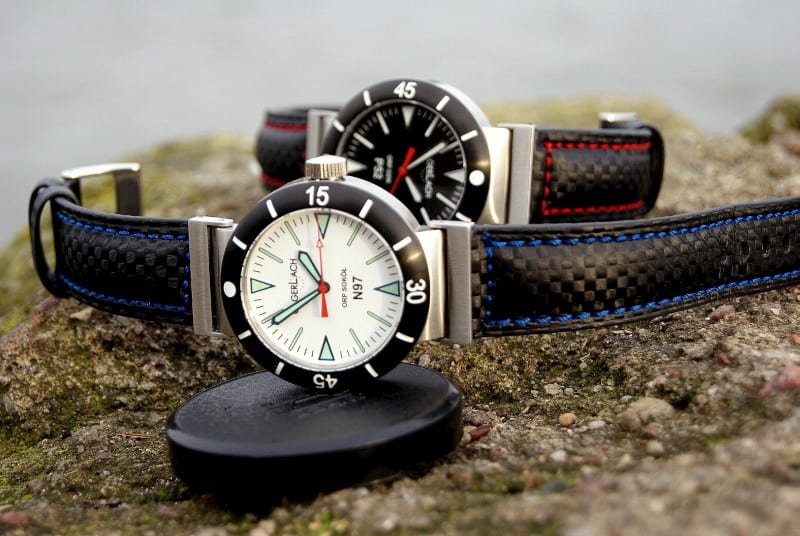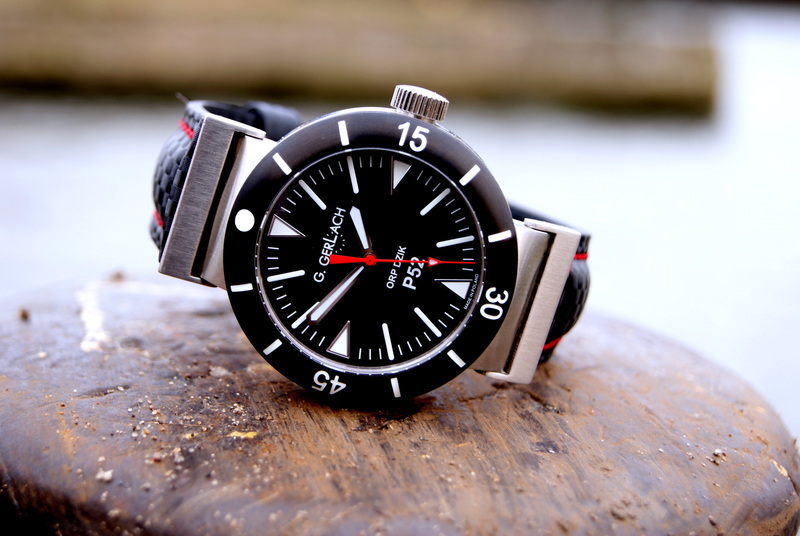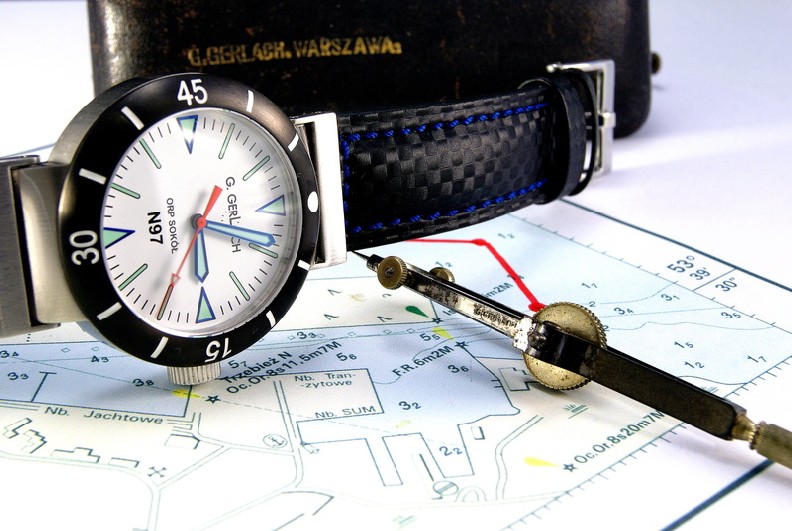When talking about watches, there is a phrase that probably doesn’t comes to mind: Made in Poland. Yet, the G. Gerlach brand aims to change that, and if their work to date is any indicator, they will likely succeed. Their designs are innovative; mixing vintage looks with new ideas, they aim to stay affordable and their philosophy is admirable. Perhaps it’s because the brand is so young, or perhaps it’s because watch enthusiasts founded it, but you can see in their designs, both for current and future models, a sense of risk and experimentation that you simply don’t see in the mainstream.
The G. Gerlach brand was founded within the last couple of years by a group of Polish watch collectors with an interesting idea. They wanted to make the kinds of watches that they themselves would wear (an understandable goal), while also using the watch as a tool to celebrate Polish history and support Polish manufacturing and innovation. The name itself is that of a Polish industrialist, who in the mid 1800’s established a brand that made optical and measuring equipment, and went on to make typewriters, manometers and more (greater detail here). G. Gerlach watches are thusly designed, manufactured and assembled in Poland. Naturally, certain components, like the movements, come from abroad.
Currently, they have two very cool dive models available that have been getting a decent amount of attention in the watch forums due to their unique looks and affordable price point. The limited edition (300 per) ORP Dzik (P52) and ORP Sokol (N97), or the “Terrible Twins”, refer to two WWII Polish submarines. Like the brand itself, all of the G. Gerlach watches will take inspiration from Polish history, telling a story through their design. The physical appearance of the Dzik and Sokol also takes cues from Polish navy history, as the first official watch of the Polish navy, the 60’s Vostok Amphibia, influenced the aesthetic.
The watches themselves are nothing short of fascinating. The two models are ostensibly the same save the dial color; the Dzik P52 has a black dial and the Sokol N97 has a white dial. Both have 316L stainless steel cases measuring 42 x 55 x 15mm, sapphire crystals and are powered by SeaGull ST 2551 automatic movements. The generally large size is offset by the inclusion of articulating lugs, which not only increase the ergonomics of the watch, they add a certain naval bulkiness that emphasizes the story of the watch. This is continued into the fat oversized bezel, which hints at the like of the Blancpain Fifty Fathoms. This bezel has a very interesting design. Instead of being a steel bezel with an inlay of acrylic or aluminum, the entire bezel is metal, and rather than flat, it curves down towards the edge. This manages to make it very bold, while not being too severe. It also features lumed inlays and a 120-click uni-directional mechanism.
The dials of the Dzik P52 and Sokol N97 have a simple but effective diver layout. No numerals are found on either model, rather there are large triangles at 3, 6, 9 and 12, long thick lines with rounded tips and the other hours and small lines for the minutes. The white dialed Sokol has a bit of additional color, as there is blue outlining the various markers. The hands of the Sokol are also blued steel with lume for hours and minutes and then a bright red seconds hand. The Dzik P52 is more monochromatic with primarily white markers. There is the addition however, of polished steel around the larger triangular markers. The hands are also polished steel, except the seconds hand which is also bright red.
Overall, the look of these divers is very unique. It’s rare to come across something that takes inspiration from history, has a certain vintage air to it, yet looks like nothing you’ve seen before. Though uniqueness alone is not a reason to buy a watch, it definitely adds to its value. In terms of quality, though we have not had the chance to handle one ourselves, the general buzz about the watches is very positive. Here is an enthusiastic review I recommend reading on Onlycultured.com (scroll to the end for a nice wrist shot). And if you happen to own one, and are reading this, let us know your thoughts in the comments.
 The future of the brand is also looking very bright. Their next model, the Otago, has a design that is more reminiscent of 70’s divers and after that is a marine watch, called the m/s Batory, which I find particularly exciting. On top of their mainline, G. Gerlach makes small run watches for specific forums. One of these projects was called the RAF 303 Fighter Squadron. Design aside, the watch was powered by a hand-wound SeaGull movement… with a Polish made module, to give the watch centralized hacking seconds and a 50hr power reserve. Any affordable brand that makes modules, like C. Ward or Louis Erard, gets an extra thumbs-up in my book, but G. Gerlach gets an yet another one (more thumbs than I have at this point) for doing it local. That’s simply amazing. So, the m/s Batory will have their next module, which will have sub-seconds, big date and a 50hr power reserve. Though there is currently only a rendering, I already know I want one.
The future of the brand is also looking very bright. Their next model, the Otago, has a design that is more reminiscent of 70’s divers and after that is a marine watch, called the m/s Batory, which I find particularly exciting. On top of their mainline, G. Gerlach makes small run watches for specific forums. One of these projects was called the RAF 303 Fighter Squadron. Design aside, the watch was powered by a hand-wound SeaGull movement… with a Polish made module, to give the watch centralized hacking seconds and a 50hr power reserve. Any affordable brand that makes modules, like C. Ward or Louis Erard, gets an extra thumbs-up in my book, but G. Gerlach gets an yet another one (more thumbs than I have at this point) for doing it local. That’s simply amazing. So, the m/s Batory will have their next module, which will have sub-seconds, big date and a 50hr power reserve. Though there is currently only a rendering, I already know I want one.
Images from Gerlach.org.pl
by Zach Weiss









 Featured Videos
Featured Videos










